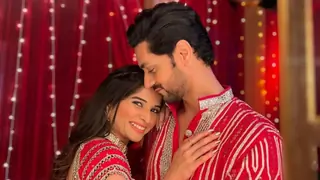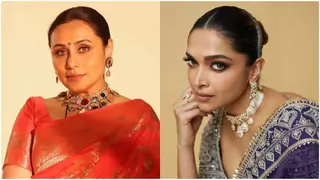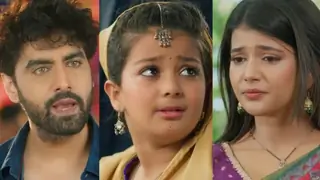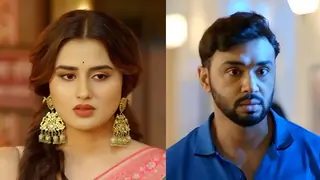The show on Sakti Pith Ke Bhairav made by Nikhil Sinha is being telecast on big magic. Ofcourse the topic itself generates curiosity and interest since all of us know how Sakti Pithas originated under the protection of Bhairav.
The show makers as usual will take resort to creative Liberty despite sticking to source version. It is inevitable for them to do so but it is always advisable to know what exactly is given in our scriptures..so that we will have the satisfaction of being aware of the basic story. Enjoy the show but get the facts right.
I would like to present whatever I know about Bhairav and Sakti Pithas as per the scriptures.
Who is Kala Bhairav?
kala bhairava was a mendicant(beggar) with a begging bowl in hand. the begging bowl was not just any vessel. it was the skull of brahma's fifth head. lord shiva cut it off to humble brahma and vishnu.
So here goes the story:
Brahma and Vishnu were disputing with each other for the status of supreme God and appealed to the testimony of the four Vedas, which unanimously proclaimed Rudra-Shiva as the Ultimate Truth of the Universe. But the disputants were unable to accept that Rudra, endowed with so many revolting symbols of impurity and degradation, could be identical with the Absolute Reality of Brahman.
Brahma laughed scornfully: "How could the Brahman, free of all attachment, lustily sport with his wife in the company of his pramathas?" However, Rudra's supremacy was finally reconfirmed by the ultimate sound-syllable, Omkra, quintessence of the Veda and most condensed symbol of Brahman, who pointed out that Shiva's wife mbodies his own blissful essence.
Just then an immense pillar of flame manifested itself in their midst, within which was recognized the towering figure of the three-eyed Rudra bearing his trident, serpents and crescent moon. But the fifth head of Brahm taunted him: "I know who you are, Rudra, whom I created from my forehead. Take refuge with me and I will protect you, my son!"
Overflowing with anger, Shiva created a blazing Bhairava in human form, addressing this Kalabhairava as "Lord of Time-Death" (kala) for he shone like the god of Death: "You are called Bhairava because you are of terrifying features and are capable of supporting the universe. You are called Kala-Bhairava, for even Time-Death is terrified of you."
He ordered him to chastise Brahma, promising him in return eternal authority over his city of Kashi the cremation-ground of the Hindu universe, where final emancipation is assured. In a trice, Bhairava ripped off Brahm's guilty head with the nail of his left thumb.
Seeing this, the terrified Vishnu praised Shiva and devotedly recited his sacred hymns, followed in this by the repentant Brahma Thereby they gained his protection by realizing and acknowledging the supreme reality of Shiva. The severed head immediately stuck to Bhairava's hand, where it remained in the form of the skull, destined to serve as his insatiable begging-bowl
Shiva then directed Bhairava to roam the world in this beggarly condition to atone for the sin of Brahmahatya."Show to the world the rite of expiation for removing the sin of Brahmahatya. Beg for alms taking up the rite of the skull (kapalavrata)." Creating a maiden renowned as '(Brahmahatya Shiva instructed her to relentlessly follow Bhairava everywhere until he reached the holy city of Kashi to which she would have no access.
Observing the Kapalika rite with skull in hand and pursued by the terrible Brahmahatya Bhairava sported freely, laughing, singing and dancing with his pramathas Stealing more than the hearts of all women, even the chaste wives of the Seven Vedic Sages (sapta-rshi) as he passed through the Daru forest, the erotic ascetic arrived at Vishnu's door to seek redemption only to find his entry barred by the guard, Vishvaksena
But Bhairav suppressed him and approached Vishnu. Then he stood before Vishnu with outstretched begging-bowl the skull. Vishnu split his own forehead-vein but the out-flowing blood, the only suitable offering, could not fill the skull though it flowed over
. Vishnu then tried to dissuade Brahmahatya from tormenting Bhairava in vain. Vishnu venerated Bhairava as the Supreme Being, untainted by sins like Brahmahatya and acknowledged that he is above these.
On arriving at Kashi Brahmahatya sank into the nether-world, and the holy ground on which the skull fell, freeing Bhairava from his Sin came to be known as Kapalamochana
. It was on the eighth day (ashtami) in the dark (waning moon) half of the month of Margasirsha that Lord Shiva manifested himself as Bhairava. Ever since, by performing worship at Kapalamochana one can get rid of even the worst sin of Brahmahatya.and whosoever fasts on this day that is on Bhairavashtami in front of Kalabhairava in Kashi and stays awake at night is freed from great sins.
The original Kala Bhairava temple was located on the banks of the Kapalamochana Trtha itself, in the Omkareshvara area north of Varanasi where Bhairava remained as the 'Sin-Eater' to remove the accumulated sins of devotees and pilgrims.
To be continued
Note: There are other versions that differ a bit reg the way the story unfolds.
Lakshmi























